Anterior Pelvic Tilt
What is Anterior pelvic tilt?
Anterior pelvic tilt is a postural displacement characterized by the forward rotation of the pelvis, causing the hips to tilt forward and the lower back to arch excessively.
When your pelvis is tilted forward, it forces your spine to bend, causing an anterior pelvic tilt. It frequently Causes prolonged sitting without adequate movement or stretching to offset the negative effects of sitting all day.
When the front of the pelvis falls relative to the rear of the pelvis, this is known as an anterior pelvic tilt. This occurs, for instance, when the hip extensors extend and the hip flexors shorten.
When the front of the pelvis rises and the rear of the pelvis falls, this is known as the posterior pelvic tilt. Running, walking, and picking up items off the ground are all made easier by your pelvis. It also aids with posture maintenance.
It frequently Causes prolonged sitting without adequate movement or stretching to offset the negative position of sitting all day.
You may take note that the muscles in your thighs and front of your pelvis are weak and tense, respectively, if you have an anterior pelvic tilt. It’s also possible that your abdominal and gluteus muscles are weak.
This is due to an imbalance in the lower body muscles. Pelvis forward pull due to a combination of tight and weak muscles.
The following tense, hyperactive muscles might be a factor in anterior pelvic tilt:
The hip flexors, which are the little muscles in the front groin region, and the quadriceps group, which comprises the front thigh muscles
The following list of weak, underactive muscles may be the source of this condition:
- Muscles in the buttocks are called the gluteus group.
- The rear of the thigh muscles are known as the hamstring group.
- The lower abdominals, or rectus abdominis,
- An increased lower back arch and a visible buttock protrusion are common characteristics of an anterior pelvic tilt.
Causes of Anterior pelvic tilt:
The elongation of the hip extensor muscles and the shortening of the hip flexor muscles result in the anterior pelvic tilt. This causes the curvature of the upper back and lower spine to grow.
Hip flexors are the muscles that connect the thigh bone to the pelvis and lower back. They can be utilized for jumping, running, kicking, and hip bending.
The four muscles that make up the hip extensors are the gluteus maximus and three more muscles together referred to as the hamstring muscles. They aid in hip extension.
Weak stomach muscles are another cause that contributes to an anterior pelvic tilt.
Prolonged periods of sitting are frequently the cause of the changing form of the spine curve and the corresponding muscle imbalances. Anterior pelvic tilt is further exacerbated by a lack of stretching or strengthening activities.
Symptoms of Anterior pelvic tilt:
- Tight muscles in the thighs and pelvic regions.
- The stomach and gluteus maximus muscles are weak.
- An outstretched stomach and a curved lower spine are signs of poor posture.
- The lower back, hips, or knees ache.
Risk factors:
- Extended durations of sitting
- lack of exercise and bad posture
- Genetic
How to Diagnose the Anterior Pelvic Tilt?
Your physician will examine you and take physical measurements.
Thomas test
Take a seat on a table. The legs need to be dangling at the knees off the table.
Bending at the knee, bring one leg to the chest.
The rear of the resting leg will rise off the table if the pelvis is not positioned appropriately.
A pelvic tilt is indicated if the resting leg needs to be extended or rotated in any way to prevent it from rising off the table.
Negative Test: There should be no space between your thigh and the table when the rear of it contacts it.
No Space.
Positive Test: You may have posterior pelvic tilt if, even after straightening your leg, there is still space between your thigh muscle and the table.
Space.
To determine whether you have an anterior pelvic tilt, you can administer the Thomas test.
- With your legs hanging off the table at the knees, lie back on the surface. Bring one leg closer to you, bend it until it touches your chest, and hold it beneath your knee.
- Continue with the opposite leg.
- When you get into this position, the rear of your resting leg should contact the table if your pelvis is appropriately positioned.
Your front thigh muscles are stiff if you have to twist your hips or stretch your resting leg to make contact with the table.
Instructions:
- Get to your feet.
- Find the landmarks: (the points are indicated in the graphic above.)
- Point bones are located in the front (ASIS) and rear (PSIS).
- Examine the differences in heights.
x-ray
One of the factors influencing the distinct pelvic orientation is the pelvic tilt. The distance between the top border of the symphysis pubis and the mid-section of the sacrococcygeal joint is measured on an anteroposterior pelvic radiograph.
Treatment of Anterior Pelvic Tilt:
Severe surgery is the final recommended choice after symptomatic medical treatment that includes physical therapy and exercise to correct the posture.
Medical Treatment:
NSAIDs, in particular, are anti-inflammatory medications that reduce pain.
Acetaminophen (Tylenol), ibuprofen (Advil, Motrin IB), and naproxen (Aleve) are examples of over-the-counter pain medicines.
Physical Therapy Treatment of Anterior Pelvic Tilt:
Correcting anterior pelvic tilt with stretching and strengthening exercises.
The ideal strategy for treating an anterior pelvic tilt is to balance the muscles that are responsible for the pelvis’ abnormal alignment. Stretching is necessary to restore the flexibility of muscles that are too tight. Conversely, weak muscles need to be strengthened.
Stretches/Releases to Correct Anterior Pelvic Tilt:
- Kneeling rear leg raise:
This exercise strengthens the muscles in the abdomen (stomach) and extends the back and buttocks (glutes).
Start on an exercise mat on all fours. The knees should be precisely beneath the hip regions, and the hands should be squarely beneath the shoulders. The weight should be split equally between the knees and the hands.
tighten the muscles in your abdomen.
Maintaining a straight leg and pointed toes, bring the appropriate leg back into alignment with the torso. Avoid hunching your back.
For five seconds, maintain the leg’s position. Lower, then 10 times repeat.
Change sides and work on the other leg while you repeat the previous steps.
- Knee-to-chest stretch:
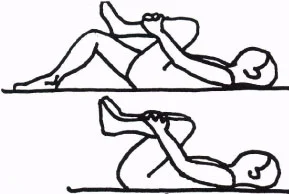
Stretch your legs wide apart while lying on your back.
Bend your right knee and bring it up to your chest. Release after 12 to 15 seconds of holding. Proceed with the left leg.
- Kneeling hip flexor stretch (psoas and iliacus)
Stretching can assist the release of the tightness in the hip flexor muscles caused by extended sitting.
This stretch aids in lengthening the tense hip flexor muscles and releasing the muscles.
Make sure your left knee is precisely over your right ankle when you crouch down.
For support, place both hands on the muscles in your right leg. Verify that the spine is straight and tall.
Maintain a neutral pelvic posture while contracting the muscles in your buttocks and abdomen.
Make sure the back and pelvis stay steady while you lean toward the appropriate hip. The muscles of the inner thighs and hip flexors should be stretched.
For thirty seconds, maintain this posture. Stretch a little bit more with each repeat as you perform the five repetitions.
To stretch the opposing hip flexor muscles, switch sides and repeat the previously described procedure.
- Quadriceps muscles stretch
To flex your knee while standing, drag your ankle behind you.
Maintain an erect posture and align your knees.
Drive your hips usually forward and angle your pelvis posteriorly.
Try to feel your quadriceps muscles at the front of your body extending.
For 30 seconds, hold.
Do this two or three times.
Groin stretch:
- Groin Butterfly Stretch

With your back to a wall, take a seat on the ground.
Take up the posture indicated above.
Try to sit as tall as you can.
Make an effort to arch your lower back.
Push your knees to the floor gradually.
Try to feel like your groin is becoming stretched.
For 30 seconds, hold.
Do this two or three times.
- Lower back stretch:
Take a seat in a chair.
Take a full forward bend.
Seek to experience a lower back stretch.
For 30 seconds, hold.
Do this two or three times.
Strengthening exercises for Anterior pelvic tilt
- plank
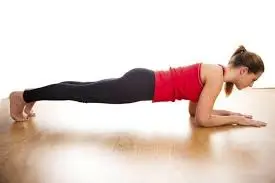
Although performing a plank may seem challenging at first, the patient should try to hold the position for as long as they can, up to a minute.
The back and abdominal muscles are targeted by the plank exercise.
On a fitness mat, lie down on your face.
Put your hands, palms down, on the mat. Hold your hands just below your shoulders.
Contract the muscles in your thighs and abdomen.
Place your thighs and upper torso on the floor and slowly raise them to a push-up posture. Maintain a straight and stiff body. Make sure the abdominal (or stomach) muscles are used for the whole activity.
Try to maintain the plank position for as long as you can—up to 60 seconds. Lower the body gradually to the floor.
- Pelvic tilt
The muscles in the stomach and abdomen are strengthened by this workout.
On the ground, bend your knees and lie face up.
To keep the back flat on the ground, tense your abdominal muscles. The pelvis should be somewhat bowed.
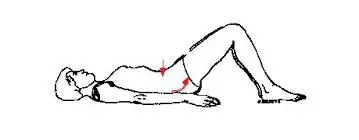
Continue in this posture for ten seconds at most.
For five sets of ten repetitions, repeat.
- Squats:
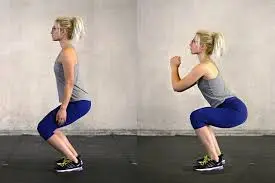
Squats improve the strength of the hamstrings, buttocks, and other leg muscles.
Place your feet just wider than your hip breadth when standing. Invert the toes just a little bit.
Hold the back neutral while contracting the abdominal muscles.
Inhale deeply. Bring the thighs parallel to the floor by lowering the hips back and down, which will cause the knees to bend. The heels should be planted firmly on the ground, and the knees should not go past the toes.
Exhale, then return to the starting position gently.
Ten to twenty times, repeat.
- The glute bridge:
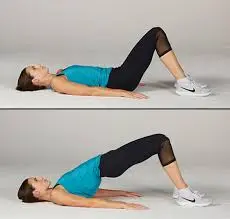
The hamstring and buttock muscles are the focus of this workout.
Lay faceup on the floor with your knees bent.
The feet should be hip-width apart.
To ensure that your back is flat on the ground, tighten your abdominal muscles. Throughout the workout, keep the muscles in your abdomen (stomach) active.
Exhale and raise your hips off the floor so that your thighs and upper torso are in a straight line.
Inhale deeply and gradually bring your body down to the floor.
Ten to twenty times, repeat.
- Ball QL
Important points
Underneath the muscle you want to target, place the ball.
Place the proper amount of your body weight on top of the ball.
You are probably at the proper place if it aches. When pushed, tight muscles are frequently the ones that hurt.
After attempting these self-releases a few times, minor bruises may be expected.
Continue rolling over the region for a good one to two minutes, or until the pain or tightness subsides.
Keep away from positioning the ball exactly in the center of the spine.
- Hip lift
Instructions:
Assume a prone position.
With your hips and knees bent at a 90-degree angle, place your feet on the wall.
Press your heels firmly into the wall and raise your tailbone off the ground.
Bend your pelvis to the back.
Your lower back should now be flat on the ground.
You may feel your hamstrings tense up.
For 30 seconds, hold.
Do this three times.
- Dead bugs
Your front pelvic top is where your abdominal muscles are attached. They are essential in causing the pelvis to rotate back into place.
Instructions for dead bug 1 and dead bug 2
Both of your knees should be bent while lying on your back.
Gently pull on your belly button to engage your abs and core.
Turn your pelvis to the back.
To flatten your lower back, do this.
Keep your lower back in this posture. Throughout the motion, maintain total touch with the ground.
Keep your lower back from arching!
Lower the opposing arm or leg slowly.
The lower, the better! (But only if you can maintain a FLAT lower back!)
Advancement: Include 5–10 second holds.
- Camel pose
Instructions:
Put yourself in the 4-point crouch.
To turn your pelvis backward, tuck in your tailbone.
Pulling in your belly button will help you activate your core muscles.
As you assume this position, release all of the air in your lungs.
For five seconds, hold this.
(Or as long it takes you to empty your lungs entirely) Repeat ten times.
Finding neutral pelvis
- Pelvic tilting (4-point kneel)
Instructions:
Put yourself in the 4-point crouch.
Subhand beneath the shoulders.hips beneath the knees.
Determine the pelvic movement’s maximum range.
Your pelvis should be fully forward-tilted.
Your pelvis should be fully retracted.
Generally speaking, the midway of these two postures is the neutral pelvis.
- Sitting
Instructions:
You must “Sit on your SIT bones” in order to sit with your pelvis in a neutral posture.
While seated on a chair, place your hands, palms up, beneath your butt to locate your sit bones. Feel for a sharp protrusion in the bone.
(Your sit bone is this.)
Consider these bones to be triangles turned inside out.
Instead of sitting on the edge of the triangle, the objective is to sit exactly on its tip, also known as its pointiest section.
- Standing
Instructions:
Put your fingers on the ASIS and PSIS while you are standing. These are the “pointy bones” that protrude the most (see above).
You must tilt your pelvis until the ASIS and PSIS are almost parallel to one another in order to place your pelvis in neutral.
Remember that a small 5 to 10-degree anterior tilt is typical.
Strengthening with a neutral pelvis
- Overhead reaches
Instructions:
Keep your back to the wall.
Maintain a neutral pelvic posture.
To do this, engage your glute and core muscles.
Raise your hands over your head while keeping your pelvis in alignment.
Remember not to let your ribs protrude.
“Maintain the ribs down” to avoid lower back arching.
Ten times over, repeat.
To advance, push your shoulders while standing while using weight.
- Pulldowns
Instructions:
Pull the resistance band downward while leaning slightly forward.
Maintain a neutral pelvic alignment.
Get your core muscles moving.
Allow your arms to slowly revert to their above position.
During this workout, you should not move your pelvis or torso.
Keep your lower back from arching backward!
Put the resistance band back in place where it was.
Ten times over, repeat.
- Strengthen hip flexors
As you sit, lift your leg as high as you can while maintaining a neutral pelvic posture.
Avoid bending backward.
Keep your posture for five seconds. On each leg, repeat ten times.
Maintaining a neutral pelvis
Important points
Throughout motions, keep the pelvis in its neutral posture.
When you execute any activity or workout, don’t forget to slightly contract your gluteals and abdominal muscles.
Exercises that target the quadriceps and lower back should be avoided until you can maintain a neutral pelvis.
You may begin to strengthen your hip flexors and lumbar extensors after you have strong pelvic control.
Recall that your body naturally returns to an anterior pelvic tilt. REMEMBER TO BE NEUTRAL.
Surgical treatment:
If anterior pelvic tilt is causing persistent pain that is not manageable with medication, surgery is typically advised. The neurological system and respiration are two more vital bodily processes that are being interfered with by the pelvic tilt.
Complications:
Reliability Sources state that an anterior pelvic tilt puts more strain on the lower back bones. In addition to other problems including strain in the neck muscles, this pressure can result in muscular fatigue.
- lower back pain.
- hip and knee inward rotation.
- hip and knee pain.
- sciatica caused by strain on the hip flexors.
Prevention
Keep away from lengthy stretches of sitting. People who work at desks or in other occupations where they must sit for extended periods of time should take regular breaks to stretch or go for walks.
Take part in regular exercise. Exercises for strengthening and stretching the muscles should be part of this.
It’s crucial to have a cozy, healthy workstation with the ideal desk, screen, and chairs.
Conclusion
Physical therapists may find it helpful to have a rudimentary understanding of pelvic tilt, especially when treating hip-related disorders. Although knowledge of pelvic tilt is important, clinical interpretations should be made with caution due to the inherent limitations in the currently available techniques for measuring pelvic tilt in the rehabilitation environment.
Additional studies on assessment techniques should look for connections between the basic clinical measurements of pelvic tilt and functional movements specific to each patient. They should also look into clinically practicable ways to reliably measure pelvic tilt during functional movements, how well patients respond to treatment, and how important clinical pelvic tilt assessment is for a full recovery.
FAQs
How should anterior pelvic tilt be avoided?
Although strengthening our glutes is crucial when we have an anterior pelvic tilt, you should never load big weights in a conventional closed chain bilateral posture (both feet hip-width apart in a symmetrical position).
Is anterior pelvic tilt aided by massage?
A timely massage treatment program together with small lifestyle adjustments that improve posture is the most effective way to cure anterior pelvic tilt. Early intervention makes APT readily treatable, and results are favorable.
What is the prevalence of anterior pelvic tilt?
Up to 85% of men and 75% of women who do not exhibit any symptoms may have an anterior pelvic tilt, according to some studies. Inactivity or prolonged sitting are the main causes of anterior pelvic tilt. It may result in further symptoms and alter posture and the curvature of the spine.
How long does it take to correct an anterior pelvic tilt?
Some studies have shown that anterior pelvic tilt can be rectified in as little as six weeks. That being said, it’s critical to acknowledge individual differences. A few weeks may be all that some people need to start adjusting their anterior pelvic tilt, whereas longer periods may be required for others.
For pelvic floor issues, which physician is the best?
Pelvic organ prolapse, fecal incontinence, urine incontinence, and other pelvic floor diseases are all treated by urogynecologists. One of these illnesses will affect about one in three women.
How should anterior pelvic tilt be avoided?
Although strengthening our glutes is crucial when we have an anterior pelvic tilt, you should never load big weights in a conventional closed chain bilateral posture (both feet hip-width apart in a symmetrical position).
How does an anterior pelvic tilt affect sleep?
The easiest tip to try if you’re a back sleeper is to place a cushion or blanket beneath your knees. This realigns your anteriorly tilted pelvis to a neutral posture, which lengthens and releases your lower back muscles.
Which muscles in the anterior pelvic tilt are weak?
Pelvic Anterior Tilt
APT is characterized by a forward tilt of the pelvis, which causes the belly to protrude and the lumbar spine to assume a greater degree of lordosis Numerous things, such as poor posture, tight hip flexors, and weak gluteal muscles.
For whom is pelvic tilt treated?
Utilizing Chiropractic Care to Treat Pelvic Tilt
A chiropractor can assist you in determining the origin of any pain you may be feeling related to pelvic tilt problems and developing the best treatment plan for your needs.
Physical therapists: can they correct anterior pelvic tilt?
The issue can be fully resolved when the right physical therapy is used. When combined with therapeutic exercises, counteractive corrective motions can effectively alleviate pelvic tilt.
Is anterior pelvic tilt reversible by doctors?
Pelvic tilt can be treated with surgery or nonsurgical methods. During adult deformity surgery, pelvic tilt can be addressed using minimally invasive surgery. You can strengthen your muscles and return your pelvis to a neutral posture by performing exercises that tilt your pelvis.
How long does it take to correct an anterior pelvic tilt?
In as little as four to six weeks, most mild to severe anterior pelvic tilt abnormalities can be corrected. It does, however, depend on the intensity, accompanying symptoms, tightness in the muscles, and weakening of the muscles. Nevertheless, this might differ from person to person. Some people may begin to solve APT in a few days, while others may need a longer time.
How can anterior pelvic tilt be corrected?
Exercise mostly involves extending the hip flexors, and back extensors, and strengthening the hip extensors in order to straighten anterior pelvic tilt. Core and abdominal muscles also help with lifestyle modifications including minimizing the amount of time spent in high-heeled shoes and attempting to switch to a standing desk in place of extended sitting.
Why does an anterior pelvic tilt occur?
The main causes of anterior pelvic tilt include weak gluteal muscles, tight hip flexors, back muscles, poor posture, and abdominal muscles. Anterior Pelvic Tilt may result from congenital differences in certain people’s pelvis, such as acetabular retroversion.
Is it possible to rectify anterior pelvic tilt?
Yes, without a doubt. Anterior Pelvic Tilt can be corrected with exercise and a change in lifestyle.
Anterior tilts can be corrected with stretches and targeted workouts together with minor lifestyle adjustments. If you must spend a lot of time sitting down at work, take frequent breaks and perform some of the post’s basic exercises, such as stretches and strengthening ones.
References
- Patel, D. (2022, July 14). Anterior pelvic tilt – Cause, Symptoms, Treatment, Exercise | Mobile. Samarpan Physiotherapy Clinic. https://samarpanphysioclinic.com/anterior-pelvic-tilt/
- Physiotherapist, N. P. (2024, January 13). Anterior Pelvic Tilt : Cause, Symtom, Diagnosis, Treatment. Mobile Physiotherapy Clinic. https://mobilephysiotherapyclinic.in/anterior-pelvic-tilt-physiotherapy-treatment/

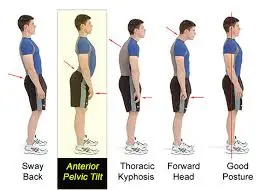
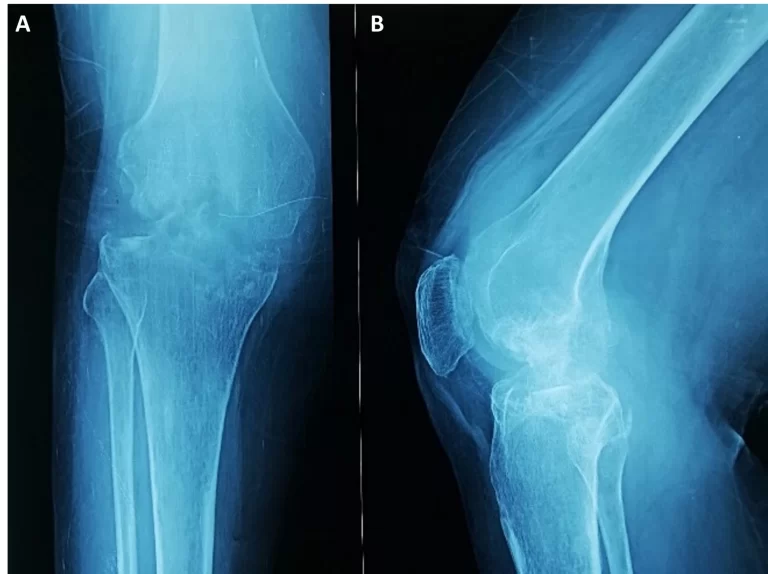
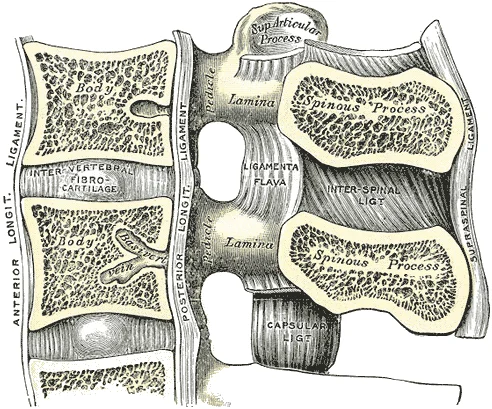
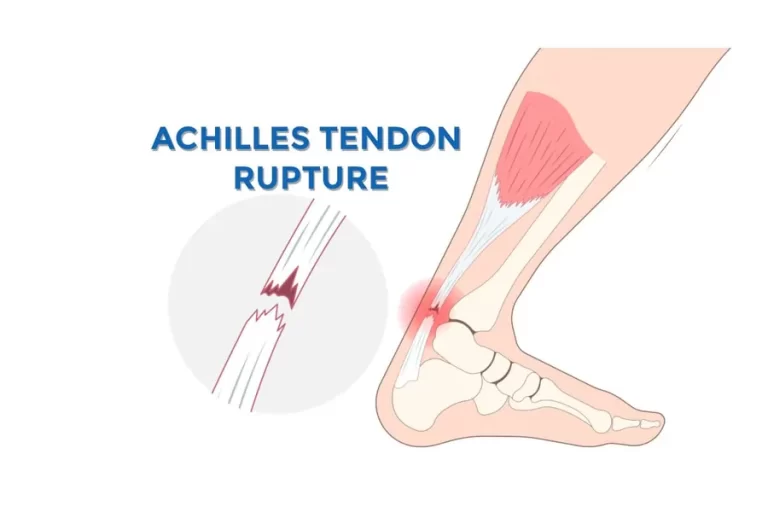
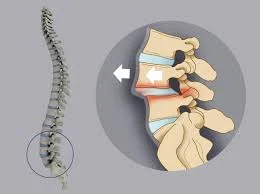

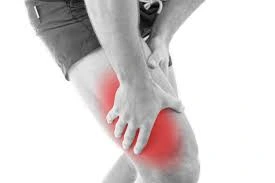
2 Comments